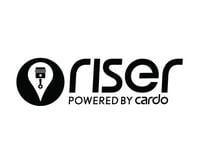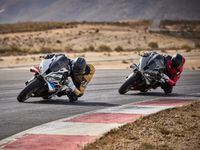The motorcycle look has almost always been cool, but retro leather jackets and flannel shirts have exploded into the general fashion the world over the past few years. Without the right bike, though, you’re just a poseur. Or perhaps simply a good candidate for becoming a rider who can pull off the full image and join us in the riding life.
We have two great candidates right here. Star Motorcycles took notice of this fashionable trend early and answered with the Bolt. The 942cc air-cooled twin features a low seat height, confidence-inspiring handling, and stylish looks that have proven to be a hit across the demographic range. An attractive price (in the grand scheme) doesn't hurt either. The R-Spec version tested here portrays the urban performance bobber look with blacked-out components and reservoir-style shocks.
Kawasaki is trying to enter the party and capture a piece of the millennial market with its new Vulcan S. Not so much bobber as mini muscle cruiser, this affordable, low-slung cruiser packs a retuned version of its venerable Ninja 650R powertrain. As one size seldom fits all, the Vulcan S features an somewhat novel concept Kawasaki calls Ergo Fit, allowing Vulcan S buyers to mix and match dealer-installed seat, footpeg, and handlebar options at time of purchase for no additional cost. The Vulcan's forward-mounted pegs offer a trio of mounting points spanning a 3-inch range, a choice of three sculpted seats in reduced-, mid-, or extended-reach form. There's also a choice of pullback-style handlebar that comes in two flavors—a mid-reach design and a reduced-reach bar that places the grips 1.4 inches closer to the rider.
As much as motorcycles can simply be life decorations, we know that these bikes are likely to be used for serious transport and are likely to be their buyer’s only vehicle. To that end, I hit the road with guest tester Ryan Orr and burned Interstate 5 South, headed for downtown San Diego. A 90-mile freeway stint was followed by an inner-city cruise and a rumble into the dirtiest parts of town.
“The motor on the Vulcan S is super-peppy, accelerates fast with good pickup, and never really signs off,” Orr said of the 649cc liquid-cooled, fuel-injected, DOHC eight-valve parallel twin. It being brought over from a Ninja, it’s no surprise the engine retains much sporty character, even with cruiser-oriented tuning tweaks in the form of revised cam profiles, a modified intake tract, exhaust, and ECU. These changes, along with a 28-percent increase in flywheel mass, have resulted in improved low- and midrange response and smoothed operation. “No matter if you are low or high in the rev range the bike emits little to no vibration,” Orr said at our first stop in town.
Although the V-twin Bolt emits a fair amount of vibration through its grips when pushed to 80 mph and beyond, the engine’s abundant flywheel effect combines with a rhythmic power-pulse cadence that delivers a very soothing sort of charisma when ridden at more relaxed revs. With peak torque located below 3,000 rpm, there’s no need or real benefit in spinning the Star near its 6,700-rpm redline.
Good shift action and predictable clutch operation on both bikes make easy work of getting from one traffic signal to the next. While the Vulcan’s instrument cluster features a tachometer and the Bolt’s doesn’t, making midrange upshifts are intuitive on either bike, and both have plenty of over-rev beyond peak torque rpm.
Both of these bikes are blessed with light steering and excellent stability. The Bolt’s piggyback shocks did a better job taming sharp bumps and potholes while its tractor-style saddle also gets the nod for superior comfort. Stopping performance was very good on both, and the ABS option for the Vulcan S is a welcome feature in this segment.
My 5-foot-10 compadre found the Bolt ergos much to his liking. "It fits me well," Orr said. "I like the bar, seat, and peg placement. It's not cramped, and you sit lower in the seat to stay out of the wind a bit better than on the Vulcan."
I also liked the Bolt’s more central footrest placement to that of the Vulcan’s heels-forward posture, which I found to induce inner-thigh muscle fatigue after an hour of saddle time. Orr found the Vulcan’s standard reach setup to be a little cramped, leading to speculation that the extended saddle and peg placement might prove more fitting. It’s worth noting that the various Ergo Fit components are also sold as accessories, meaning an owner can change ergos after purchase.
When time came to claim a saddle for the freeway ride home, I pulled rank and took possession of the Bolt, the bike we both favored. While we agreed that at $7,399 ($6,999 without ABS) the Vulcan S represents a great bargain that may appeal to cash-strapped buyers, we failed to connect with the bike beyond its solid functionality. And while it’s true the Bolt R-Spec rings in at significantly higher price of $8,390, we found it more robust and soulful, a machine that invokes more emotion. Its styling is also right for the times, and the aftermarket has embraced what is one of the more customizable options among Japanese cruisers.
If you’re looking to cruise into the real riding life, the Bolt is your bike.











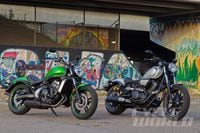
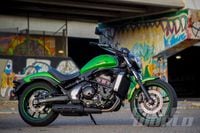
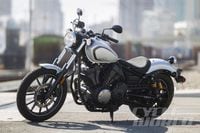
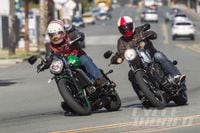
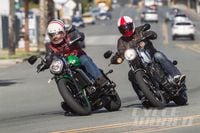
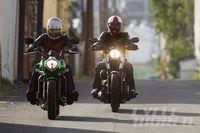
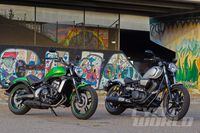
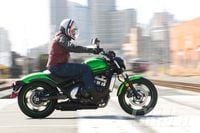
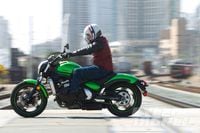
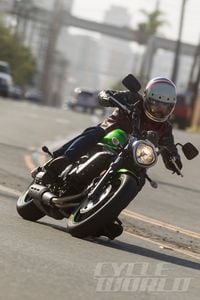
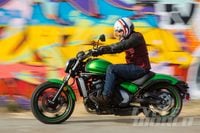
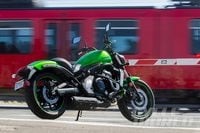
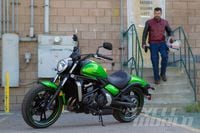
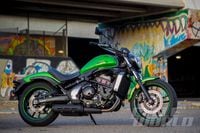
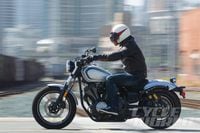
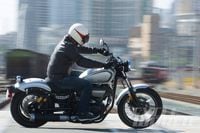
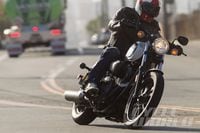
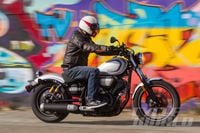
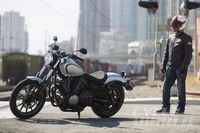
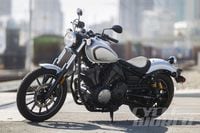
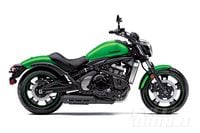
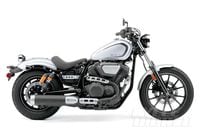
/cloudfront-us-east-1.images.arcpublishing.com/octane/JJ3MC6GNDFF5ZNYD3KD3E4EY7Y.jpg)
/cloudfront-us-east-1.images.arcpublishing.com/octane/XH2ETEU4NVGDFNQO2XT2QQS5LU.jpg)
/cloudfront-us-east-1.images.arcpublishing.com/octane/UFG652C27BDBFPK42TDAJ5CMX4.jpg)
/cloudfront-us-east-1.images.arcpublishing.com/octane/AUE3NFVRRZDSBIDVUGIYIDQNUI.jpg)
/cloudfront-us-east-1.images.arcpublishing.com/octane/LYR62CH2WNBMHJJVXVATZHOUE4.jpg)
/cloudfront-us-east-1.images.arcpublishing.com/octane/RBCTRGBQYBDK7A6XPG3HKPS7ZQ.jpg)
/cloudfront-us-east-1.images.arcpublishing.com/octane/MQXQRYMZVBCWJIRYP3HEN3SHVE.jpg)
/cloudfront-us-east-1.images.arcpublishing.com/octane/TSPODNNEWRDSVJGUCNQTDG4ADI.jpg)
/cloudfront-us-east-1.images.arcpublishing.com/octane/X5TB7BDV4BA2RPSY54ZGK27RP4.jpg)
/cloudfront-us-east-1.images.arcpublishing.com/octane/REUHOJXRDBGZ5IHBYZCCBCISPA.jpg)
/cloudfront-us-east-1.images.arcpublishing.com/octane/52LGJTCKBFEHDF7S7H4CVUIMGM.jpg)
/cloudfront-us-east-1.images.arcpublishing.com/octane/YMWAIPIPSJAOXOU3QMJMGH37OM.jpg)


/cloudfront-us-east-1.images.arcpublishing.com/octane/EJ6KZRGAYBCVXNL2PJXL37UVWQ.jpg)
/cloudfront-us-east-1.images.arcpublishing.com/octane/AAN4TI76M5H5JMUVEIGASWXBDU.jpg)
/cloudfront-us-east-1.images.arcpublishing.com/octane/P3RXD2UCPFF37CMB7CHPVKXORY.jpg)
/cloudfront-us-east-1.images.arcpublishing.com/octane/VZEG2EJI2RDFZNHLRZMU56MD3Q.jpg)
/cloudfront-us-east-1.images.arcpublishing.com/octane/GVJQO5FFOFBWNGODOBRB4FBAW4.jpg)
/cloudfront-us-east-1.images.arcpublishing.com/octane/BIVAK2SFIBDJJM25E7I5VU2FJE.jpg)
/cloudfront-us-east-1.images.arcpublishing.com/octane/CH5VX52UG5CFHOVH5A6UYEFWWA.jpg)
/cloudfront-us-east-1.images.arcpublishing.com/octane/ZVGJNGZRU5C33N7KN23BBFKSC4.jpg)
